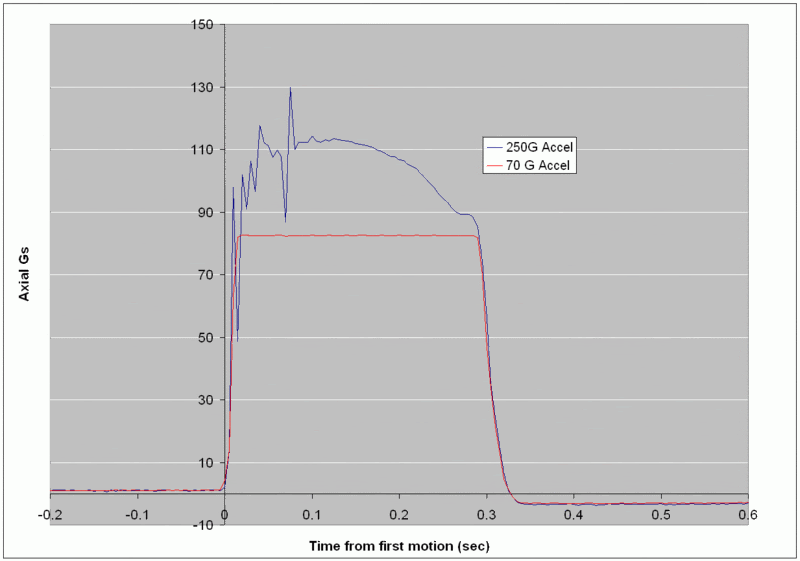More fun stats from the Mad Rex's final fight:
It left the rail at 150 mph
10 feet above the ground it was doing 191 mph
0 to 500 mph in 0.225 seconds
Peak sustained Gs: 114
Peak measured Gs: 130
Peak velocity at liftoff + 0.325 seconds, at 660 mph, at an alitude of 160 feet.
The primary goals of the flight were to verify that the 250G version hangs together at 100+ Gs and record what a 70G Parrot measures in the same flight. Both of those were met with flying colors. Here is a plot of the two accelerometer traces:

The 250G altimeter that the charges were hooked to did just fine at igniting the charges. After that, the flight was not quite so successful.
Just awesome Adrian. I think we were all surprised just how fast it left the pad- way faster than my 125 gram rocket with a G80.
So are the oscillations in the 250G meter real thrust pulses, an artifact of the sampling method, or an error in the sensor?
Not a bad day on the prairie. Chad
Thanks, Chad. Usually I like long-burn motors too, but it was quite a thrill to see it leap off the pad like that.
So are the oscillations in the 250G meter real thrust pulses, an artifact of the sampling method, or an error in the sensor?
I'm wondering that myself. It's interesting that the 70G sensor doesn't show the same oscillation. But looking closely at the start of the thrust, the 250G trace doesn't drop down below the 70G trace until right about when 70G sensor has saturated, so if there was a dropout like that, maybe the saturated 70G sensor just didn't pick it up. If I had to guess, though, I think there is probably an underdamped response in the 250G sensor that caused an artifact in the data.
That last up and down, though, is probably either a motor pulse or perhaps something shifting in the av-bay.
It was a good day of flying. Congrats on your record-breaking B flight.
What was the motor, Adrian?
Sorry I missed the launch.
Ken
Ken,
It was an H999.
Love that motor! 8)


